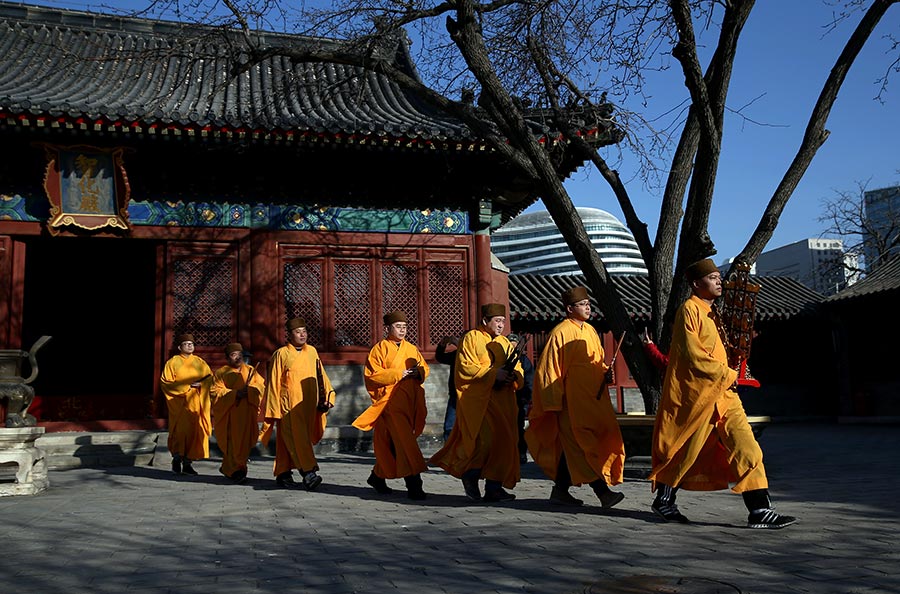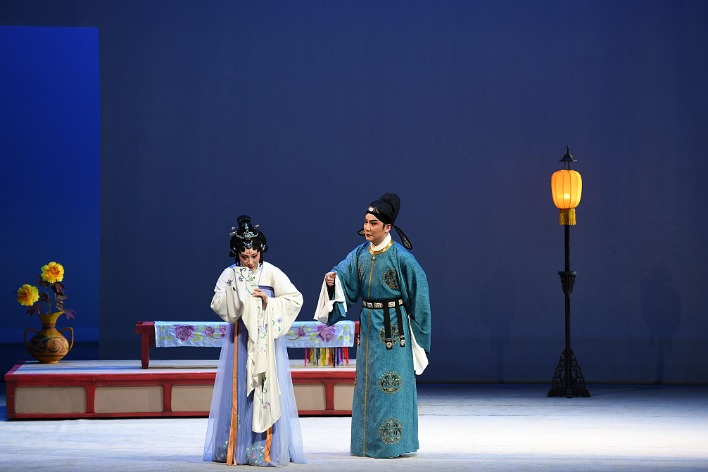Temple of Wisdom Attained (Zhihua si)

Built during the reign of the Yingzong Emperor (r. 1436-1449), the Temple of Wisdom Attained in Beijing stands in the city’s central Dongcheng district, and has witnessed vicissitudes for more than 560 years. The well preserved four enclosures of the temple is the largest Ming Dynasty (1368-1644) wooden complex in Beijing. It is also a pure land for Buddhism that integrates Buddhist scripture, murals, music, and other Buddhist arts.
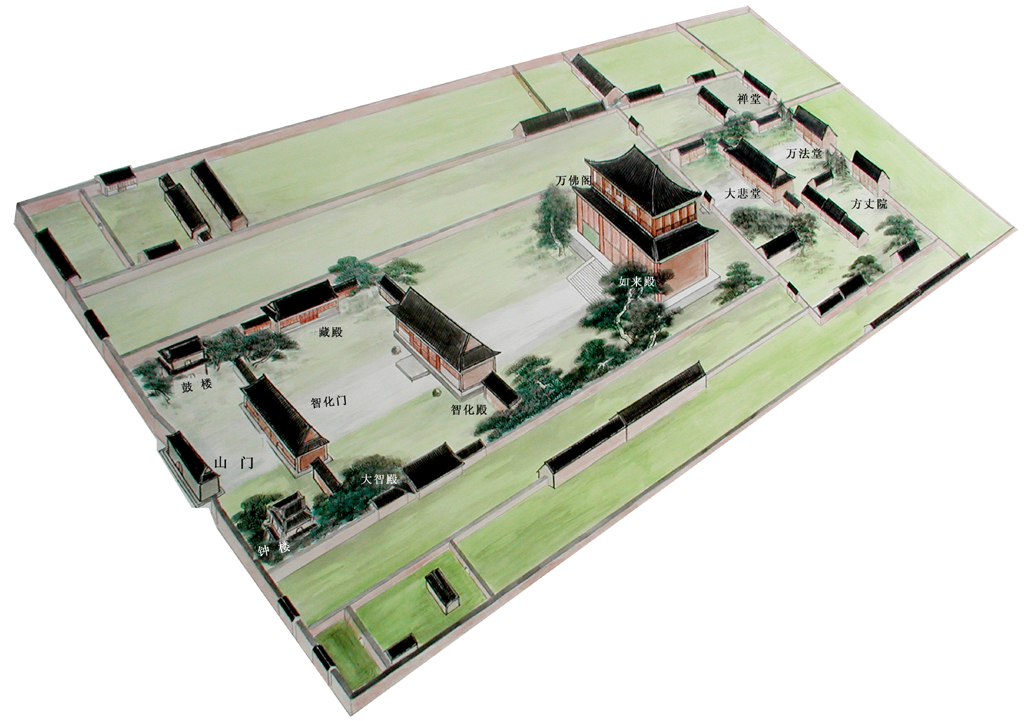
Funded by Wang Zhen (d. 1449), a powerful eunuch of the Directorate of Ceremonials in the court of the Yingzong Emperor, the Temple is located to the east of his luxurious residence. The Yingzong Emperor named it Temple of Wisdom Attained and inscribed the white marble name panel. Today, the horizontal panel bearing his inscriptions "Imperial Named Temple of Wisdom Attained" (Chici Zhihua si) can still be seen at the entrance gate of the Temple.
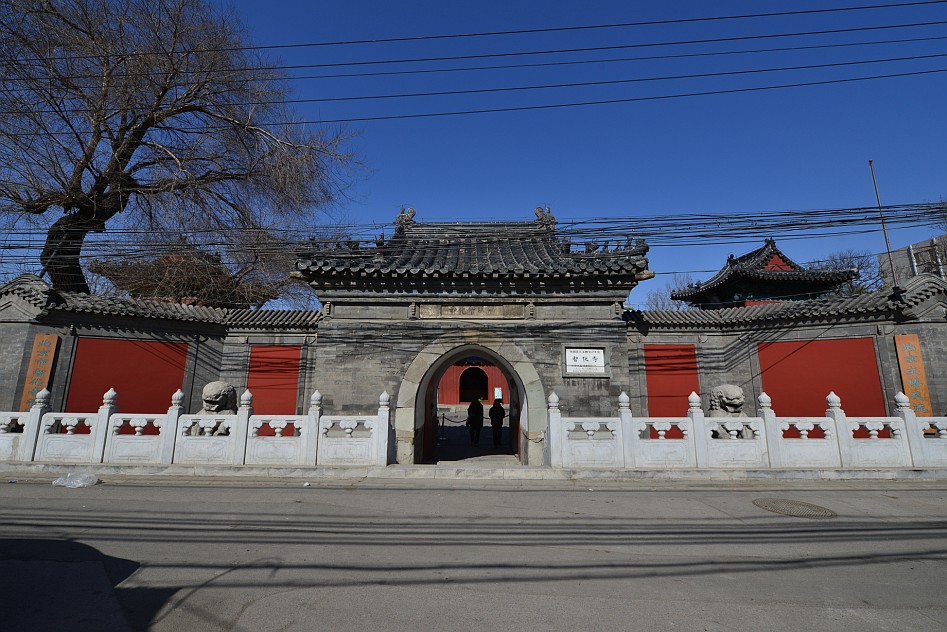
Major buildings of the temple are covered with black glazed tiles and decorated with black glazed mythical figures at roof-edge corners. Despite multiple renovations throughout history, its lintels, beams, brackets, and decorative paintings still retain the characteristics of the early Ming Dynasty architectural style. The Buddhist statues, carvings on the sutra drawers and the revolving book cabinet (Zhuanlun zang) have an air of antiquity and demonstrate superb craftsmanship.
Hall of Wisdom Attained (Zhihua dian)
It is the main hall of the temple. It originally enshrined representations of Sakyamuni, the Buddha of Medicine, Amitabha, and the Eighteen Arhats. The rear part of the hall is a wing room which houses the Ming Dynasty mural Kṣitigarbha and Ten Kings of Hell.
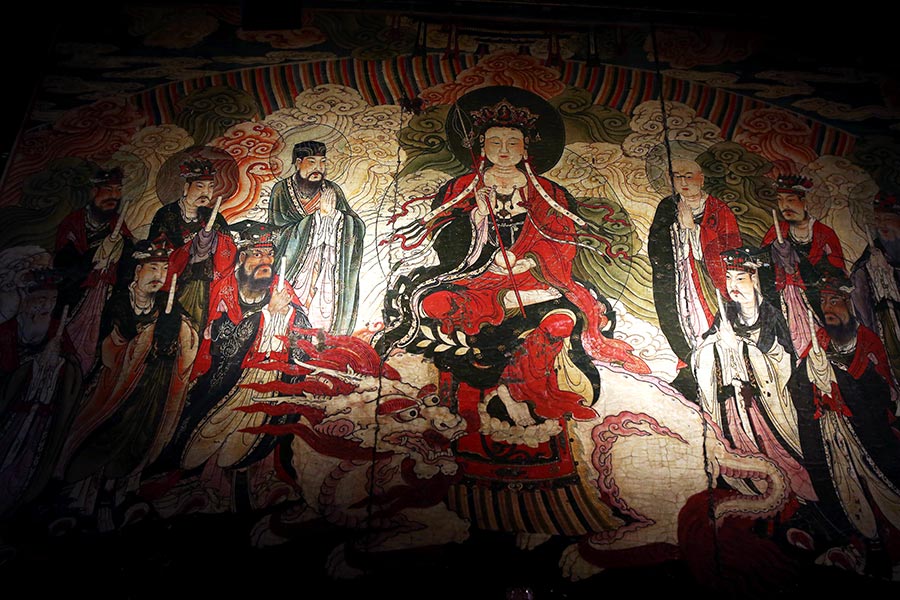
A coffered vault was set into the flat ceiling of the hall. It was designed as an intricate geometric interplay of squares and octagons with carved dragons. Unfortunately the carpentry masterpiece was lost to the United States in the 1930s, and is now kept as a permanent collection of the Nelson-Atkins Museum of Art.

The Library Hall
It is the western side hall of the Hall of Wisdom Attained, housing the only surviving Ming Dynasty revolving Buddhist book cabinet (zhuanlun zang) in Beijing. The hall is unique in terms of its well-designed structure, exquisite carvings, abstruse Buddhist denotation, and elegant caisson ceiling.

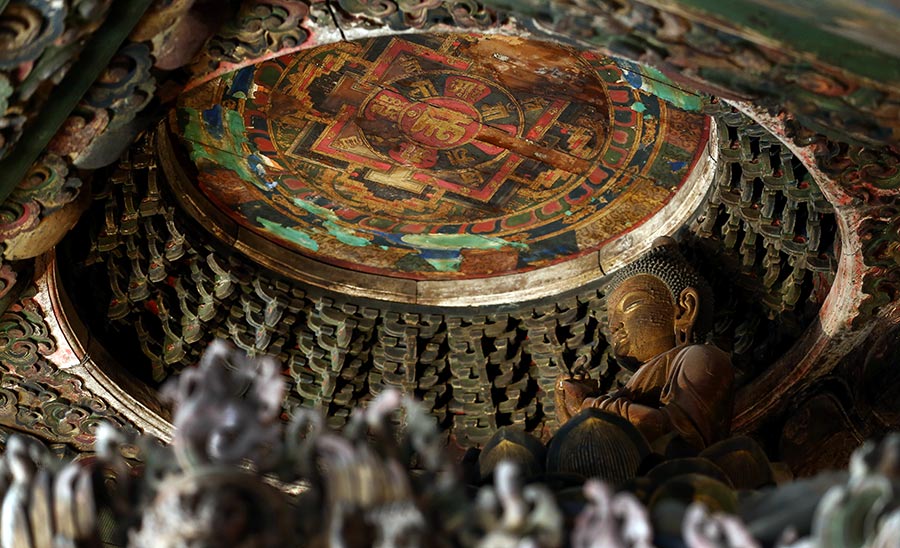
Hall of Tathagata (Rulai dian), Belvedere of a Myriad Buddha (Wanfo ge)
The largest building in the temple, the two-story hall enshrines Tathdgata attended by Mahābrahmā and Vájra on the ground floor, and Vairocana, Locana, and Sakyamuni on the upper floor. The upper floor space got the name Belvedere of a Myriad Buddha because of the 9,999 Buddha niches embedded in walls on both floors. Again, the caisson was lost the United States in the 1930s.
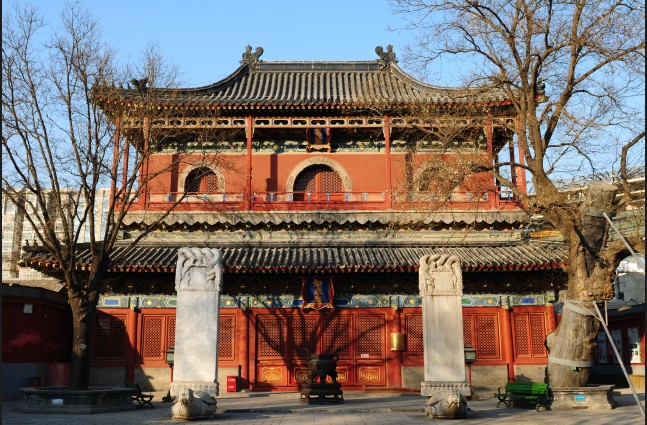

Centuries-old ritual music is preserved and performed by a group of traditional musicians in the temple everyday at 10:00 am and 3:00 pm. The solemn, soothing music, played with percussion and wind musical instruments, originated as folk music but developed in the Ming imperial court by integrating religious elements. The Temple of Wisdom Attained was where it was substantially systemized and formulated. It has now been handed down to the 27th generation of musicians, who learn the playing technique, music notation, and vocal skill through strict instructions from their masters.
